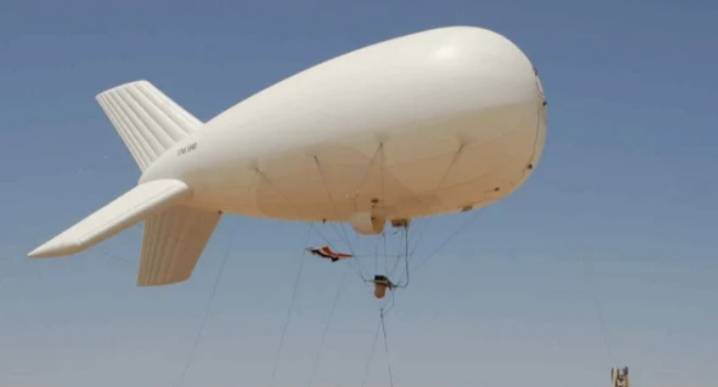In an era of highly advanced satellites capable of imaging objects smaller than a car, spy balloons may seem like an ancient relic, but this perspective is inaccurate. Spy balloons were a prominent tool for aerial surveillance during the Cold War and were used long before that, dating back over 200 years to the Napoleonic Wars for intelligence gathering, albeit in simpler forms. Security experts, as reported by the British network "Sky News," believe that spy balloons are just part of a "revolution" in the development and use of high-altitude flying vehicles. Last year alone, Britain invested millions of dollars into a program to develop spy balloons.
#### The Balloon Incident
The incident of a Chinese balloon flying over the United States highlighted this type of aerial vehicle, despite China's denial that the balloon was for espionage. The Chinese Foreign Ministry stated that the balloon is "civilian" and used for research, particularly for meteorological purposes. The ministry's statement mentioned that the balloon has limited steering capabilities and deviated from its planned route due to winds. Meanwhile, the United States claims that the balloon, which is the size of three buses, was spotted flying over the northwestern U.S., including Montana, which hosts military nuclear facilities. A senior U.S. defense official stated that Washington is "very confident" that the high-altitude Chinese balloon was flying over sensitive sites to gather information.
#### What Exactly are Spy Balloons?
Spy balloons are lightweight balloons filled with helium, equipped with spy equipment such as long-range cameras. They can be launched from the ground into the air, where they can soar to altitudes of 18,000 meters, above the airspace designated for commercial aircraft, in an area known as "near space." While in the air, these balloons utilize a combination of air currents and pockets of compressed air, which can act as a form of navigation.
#### Why are They Important in the Age of Satellites?
According to security and defense analyst Professor Michael Clarke, the biggest advantage of spy balloons over satellites is their ability to study an area for a longer duration. He added that these balloons can remain over a particular area for extended periods. He explained, "Due to the way the Earth rotates, unless the satellite is over the equator, you need 3-5 satellites to track a specific spot all the time." He further stated, "These balloons are relatively cheap and much easier to launch compared to satellites."
#### Will the Use of Balloons for Espionage Continue?
To a large extent, according to Clarke. Despite the widespread use of satellite technology, several countries, including Britain, are focusing on developing upper-atmosphere surveillance vehicles. Last August, the British Ministry of Defence announced a deal worth over $120 million with an American company to supply them with unmanned balloons for surveillance and reconnaissance.




